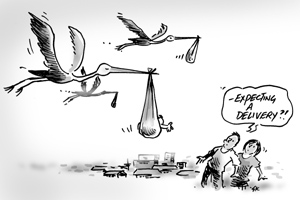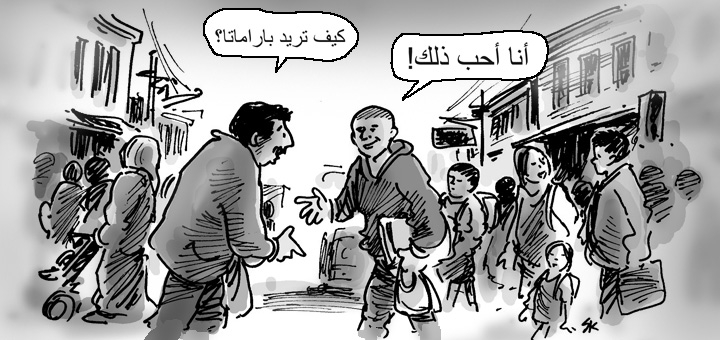BLOG
Where do overseas migrants go in Australia?
Where do overseas migrants go in Australia?
Overseas migration has been – and continues to be – a significant part of Australia’s population growth in recent years. In this, the second part of his Components of population change series, Glenn looks at the role Net Overseas Migration has played in our population growth, and how the patterns of settlement and subsequent migration play out in different parts of Australia.
One of the key components of population change is migration from overseas. This is called “Net overseas migration” and net is the important word here.
When we talk about migration, many people think only of those coming in. The government sets a permanent migration intake which can change at various levels, based on the type of migration (permanent – skilled workforce migration, family migration and humanitarian refugees, and temporary – students, backpackers, 457 visa holders).
There are also expats returning home, and New Zealanders who don’t need to be part of a migration stream. But it’s a “Net” figure because it also includes people leaving Australia. This can be residents leaving to live long-term overseas, students going home after their studies etc.
Australia-wide, Net Overseas Migration (NOM) makes up around 60% of our population growth in any given year – a bit higher in some, a bit less in others, but mostly in that vicinity. It varies a lot from area to area though, with parts of Sydney and Melbourne having places dominated by overseas migration, while some rural areas get little or none.
The data referenced in this blog series comes from the recent ABS release 3218.0 – Regional Population Growth.
Map: see the components of population change in your area
The map below shows how the different components of migration for every LGA in Australia.
Search for your place, click the map + scroll to zoom in/out or click and drag to move the map
The greatest number of net overseas migrants, by LGA
For 2017-18, here are the Local Government Areas with the greatest number of net overseas migrants.
| % of total growth | ||||||
|---|---|---|---|---|---|---|
| LGA | Immigration | Emigration | Net Overseas Migration | Natural | Internal | Overseas |
| Brisbane (Qld) | 40,150 | 28,233 | 11,917 | 35.7% | 12.3% | 51.9% |
| Melbourne (Vic) | 24,295 | 15,422 | 8,873 | 8.3% | 9.7% | 82.0% |
| Sydney (NSW) | 23,604 | 15,493 | 8,111 | 25.3% | -40.3% | 115.0% |
| Parramatta (NSW) | 13,066 | 6,261 | 6,805 | 36.3% | -24.1% | 87.8% |
| Monash (Vic) | 12,157 | 5,828 | 6,329 | 17.2% | -117.8% | 200.6% |
| Canterbury-Bankstown (NSW) | 9,890 | 4,275 | 5,615 | 70.2% | -71.9% | 101.7% |
| Cumberland (NSW) | 9,863 | 4,250 | 5,613 | 63.3% | -71.9% | 108.6% |
| Gold Coast (Qld) | 13,321 | 8,427 | 4,894 | 21.1% | 47.6% | 31.3% |
| Canberra (ACT) | 10,920 | 6,125 | 4,795 | 40.1% | 6.2% | 53.7% |
| Wyndham (Vic) | 7,613 | 2,896 | 4,717 | 28.5% | 38.4% | 33.1% |
- A few things to notice – the capital cities of the east coast dominate net overseas migration. Brisbane is the largest, due to its huge size, but Melbourne and Sydney are just behind. These areas attract a lot of overseas students who may stay for only a few years. Note that they also have quite high emigration – people leaving for overseas. This will be largely those students returning home.
- Other areas which feature highly are areas associated with universities, such as Monash and the ACT.
- Then you have places like Canterbury-Bankstown and Cumberland (and also Monash) – these are extremely culturally diverse areas where migrants tend to settle when they arrive in Australia. Have a look at the percentages for Overseas-migration here. They are all over 100%. That means that overseas migrants make up more than their total population growth (ie. the sum of net internal migration and natural increase is negative, so their populations are totally supported by overseas migration, but people move out within Australia).
What is the demographic story here?
This is a common trend among the culturally diverse areas in our cities. Overseas migrants move in, while those who were born here move out. Also, overseas migrants who have been around for a few years upgrade their housing and move outward within the metropolitan area.
For instance, in Sydney, they might settle in Canterbury-Bankstown and rent, but when they want to buy a house they move out to Liverpool or Campbelltown. Similarly, in Melbourne, they might settle in Monash initially, and move out to Casey and Cardinia for more affordable housing. So these latter areas while getting some overseas migrants, largely have people settling who have been in Australia for a few years.
The highest percentage of net overseas migrants, by LGA
Here are the top 10 LGAs with at least 100 overseas migrants, who have the highest percentage of their growth coming from overseas migration. All are over 100%, and most fit into this category of ‘first-port-of-call’ areas.
| % of total growth | ||||||
|---|---|---|---|---|---|---|
| LGA | Immigration | Emigration | Net Overseas Migration | Natural | Internal | Overseas |
| Belmont (WA) | 1198 | 829 | 369 | 1412.0% | -2788.0% | 1476.0% |
| Unley (SA) | 1001 | 595 | 406 | -339.1% | -443.5% | 882.6% |
| Victoria Park (WA) | 1519 | 1050 | 469 | 193.9% | -572.4% | 478.6% |
| Armidale Regional (NSW) | 617 | 270 | 347 | 130.0% | -415.6% | 385.6% |
| Stirling (NSW) | 5152 | 3683 | 1469 | 431.0% | -691.9% | 360.9% |
| Prospect (SA) | 487 | 221 | 266 | 120.7% | -326.4% | 305.7% |
| Norwood Payneham St Peters (SA) | 1134 | 613 | 521 | 23.6% | -216.3% | 292.7% |
| Burwood (NSW) | 2711 | 1303 | 1408 | 37.0% | -198.7% | 261.7% |
| Campbelltown (SA) | 1097 | 471 | 626 | 21.3% | -136.4% | 215.1% |
| West Torrens (SA) | 1891 | 812 | 1079 | 26.2% | -131.4% | 205.1% |
| Monash (Vic) | 12157 | 5828 | 6329 | 17.2% | -117.8% | 200.6% |
| Randwick (NSW) | 10094 | 5906 | 4188 | 49.5% | -147.4% | 197.9% |
So most of these areas have populations which would be declining substantially if it weren’t for overseas migrants. But this is part of a general population movement within Australia as well – people don’t stay in one place but move around in fairly predictable patterns which have a lot to do with the type of housing and its affordability in each area.
The impact of overseas migration on smaller rural areas
You will note that I’ve excluded very small rural areas with less than 100 overseas migrants from my analysis above, mainly because they generate extremely high percentages (several thousand percent) from small population bases. However, overseas migration is still very relevant in these areas.
Some of these areas have no population growth but the small amount of overseas migration is keeping their population from declining. This includes places like Southern Grampians in Victoria, and Berri-Barmera in SA and Leeton in NSW. The migrants coming into in these places might be few in number but they are very important to local economies, often fulfilling particular skillsets which are needed in the area.
I had a look for any areas which had negative NOM (ie. net emigration) – but the ABS has not recorded any. The lowest NOM number in the 2017-18 dataset is zero. It’s normally the case that Australia gets a lot more people coming in than leaving – but I am surprised there isn’t a single area where more people left for overseas than came in.
Learn more about the drivers of population change in your area
Once again, if you’re interested in digging deeper into the components of population change in your area, .id’s population forecasts give you all the components of population change for your area for the next 25 years, right on the website.
Glenn - The Census Expert
Glenn is our resident Census expert. After ten years working at the ABS, Glenn's deep knowledge of the Census has been a crucial input in the development of our community profiles. These tools help everyday people uncover the rich and important stories about our communities that are often hidden deep in the Census data. Glenn is also our most prolific blogger - if you're reading this, you've just finished reading one of his blogs. Take a quick look at the front page of our blog and you'll no doubt find more of Glenn's latest work. As a client manager, Glenn travels the country giving sought-after briefings to councils and communities (these are also great opportunities for Glenn to tend to his rankings in Geolocation games such as Munzee and Geocaching).









